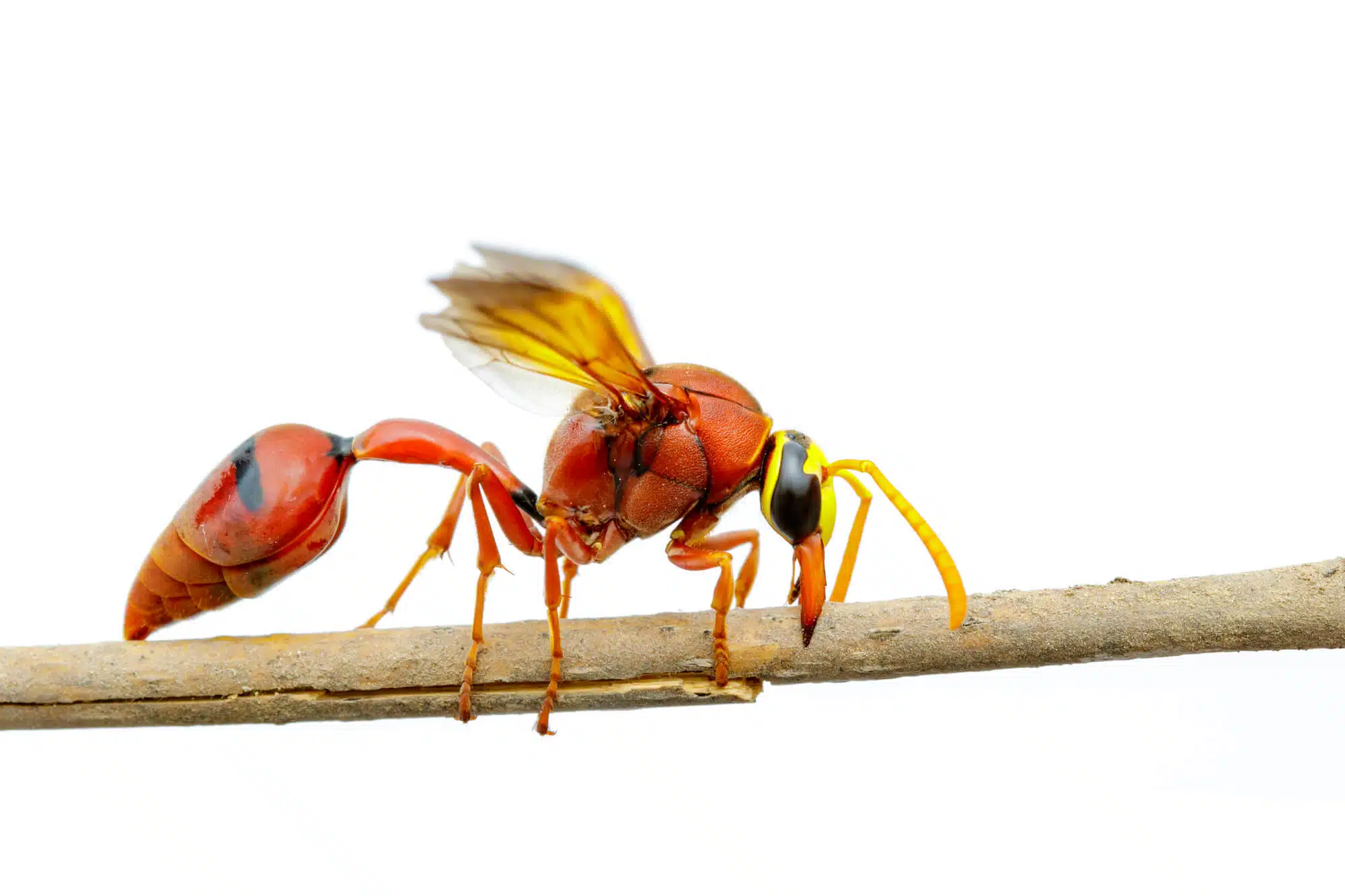A wasp gathers as food for its future offspring larvae that contain maggots of another wasp in their bodies, thus harming their survival
Why do animals sometimes behave in a way that harms their survival? This is a question that evolutionary ecologists have been investigating for many years. Dr. Michal Segoli from the Desert Research Institute at Ben Gurion University of the Negev, studies the evolutionary and behavioral ecology of insects - the largest and most diverse group in the animal world - how they develop according to the environment they live in and how they behave within it.
Insects have a complex relationship with humans. There are harmful species, which destroy agricultural crops or transmit diseases. Although their number is relatively small, their economic and health impact is enormous. And there are extremely beneficial species, for example those that feed on pests and thus reduce the destruction of agricultural produce and those that pollinate flowers and thus help to fertilize them.
In the research, which was supported by the National Science Foundation, Dr. Segoli focuses on parasitic (parasitoid) wasps - which lay their eggs inside or on other insects, and the offspring that hatch from them feed on their tissues and cause their death. She examines the behavior of wasps and the interaction between them and their prey in a natural environment and their benefit to humans. Some of these wasps can be used to kill pests such as aphids, bedbugs and caterpillars. For example, you can release them in agricultural areas when necessary and even grow them in large quantities in the laboratory.
In their latest study, Dr. Segoli and her team examined the relationship between a parasitic wasp of the Copidozoma type and a wasp. The wasp builds mud nests and divides them into cells. Inside each cell she lays one egg and puts in it the prey she has collected - moth larvae. That way, as soon as her offspring hatches from the egg, its food is already waiting for it. After it completes the stages of its development (maggot and pupa), it turns into an adult pupa that breaks out of the cell.
The researchers sampled urn nests throughout the Negev and studied them using different methods. For example, in the observations (among other things about the way the sparrow builds the nests, looks for the moth larvae for food and brings them to the nest); and in laboratory experiments (in which, for example, they analyzed moth larvae and checked how many cases finally developed into a mature pitcher). This is how the scientists discovered that many of the moth larvae that the moth collects for its future offspring, contain Copidosoma maggots in their bodies. That is, they are taken care of.
As a result, in many of the cells of the nests, the insects died - the moth larvae were eaten inside and out by the copidosoma maggots, and the offspring of the moths had nothing left to eat because the moth larvae were inedible, and the copedosoma maggots finished their development inside the moth larvae, emerged from them, and got stuck in the mud house, because their body Can't hack it. Some of the prey of pitcher plants may include pest larvae. Therefore these findings, which among other things testify to the non-development of many mature plants, point to possible consequences for agriculture.
The question arises, why does the Hadith collect treated larvae for her future offspring and thus cause a mass death, which includes her own offspring? Says Dr. Segoli: "It is possible that the magpie simply collects all the larvae she finds because she cannot afford to be too picky; Other insects can invade the cells she has built if she is gone for too long. In addition, it is possible that the treated caterpillars are fatter than other caterpillars, and thus the caterpillar gets confused and thinks that they are food worth investing in. It could also be that the treated larvae are more passive than other larvae and therefore it is easier for the trap to catch them." However, adds Dr. Sagoli, "The population of the turtledoves is still developing nicely - apparently because they lay many eggs and give birth to enough offspring. It is still a mystery and we will continue to investigate it in the following studies (among other things, we plan to introduce treated and healthy larvae to the traps and see who they will choose)".
Life itself:
Dr. Michal Segoli, 45 years old, is an ecologist and lives with her family in Sde Boker. She and her husband (who is also an ecologist) have three children - ages 17, 15 and 8. They love nature very much and try to travel a lot, in Israel and around the world. During the postdoctoral period they lived and traveled in the Townsville area, Australia, and in Davis, California.
More of the topic in Hayadan:

